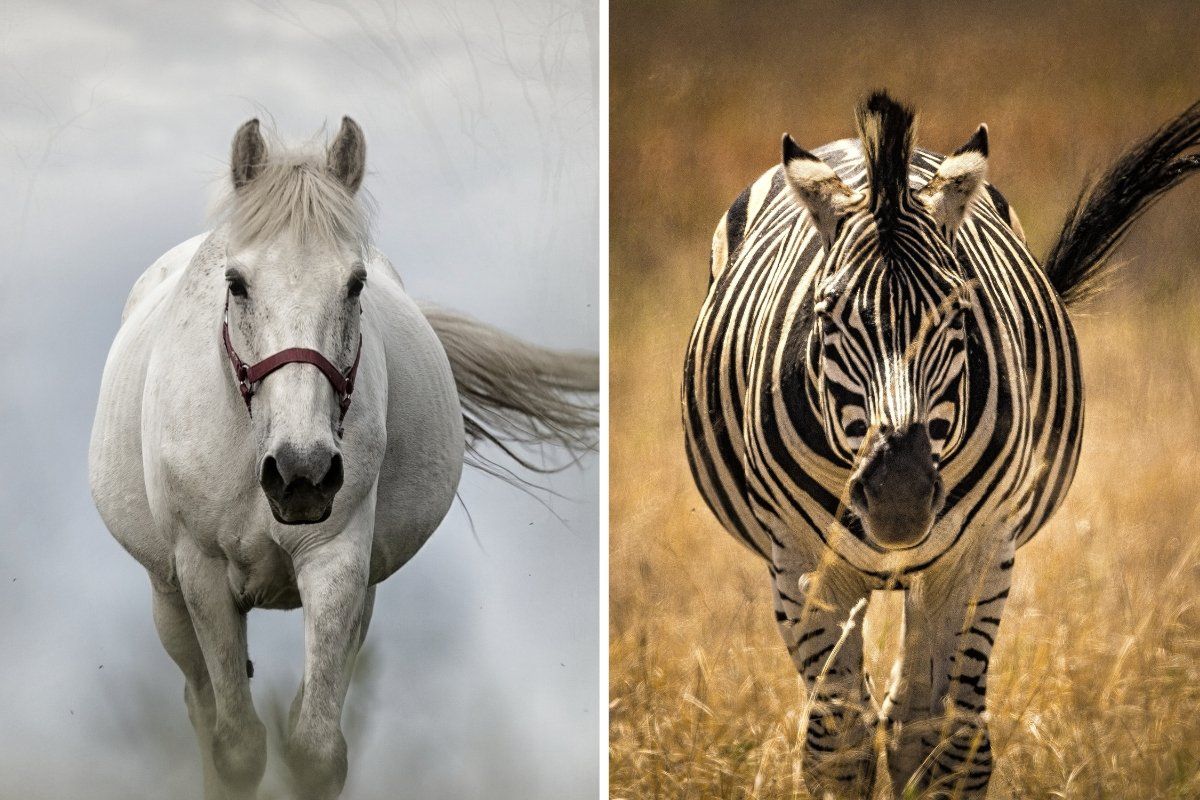Why have we domesticated some animals but not others? It comes down to four F's.
An entertaining video explains why we can't ride zebras or breed "war bears."

Horses were domesticated over 5,000 years ago. Zebras, never.
Humans have domesticated several kinds of animals over the millennia, from trusty horses and mules to livestock for milk and meat to our favorite furry companions. But why those specific animals and not others? What is it that led us to those particular choices? Why can we ride horses but not zebras? Why don't we purposefully breed "war bears" to fight for us?
That last question comes straight from the always-interesting and often-hilarious CGP Grey, whose YouTube videos explore all kinds of things we wonder about but don't necessarily take the time to research. In the video "Why Some Animals Can't Be Domesticated," Grey explains the four main elements that make an animal a good candidate for domestication, which excludes bears (and many others) from the list.
Grey alliterated the four elements to make them easier to remember: Friendly, Feedable, Fecund, and Family-Friendly. Let's dig into what those mean.
- YouTubewww.youtube.com
Domestication requirement #1: Friendly
This one is fairly self-explanatory, but basically an animal has to not post an inherent, immediate threat. We have to be able to catch them if we're going to domesticate them, so that eliminates all of the "carnivores whose day job is murder" as Grey puts it, as well as the large, nervous prey animals that are too afraid of us to let us get anywhere near them.

Domestication requirement #2: Feedable
Every animals is feedable, of course, but that doesn't mean it's easy or cheap to feed them, especially in large numbers. This category pretty much eliminates pure carnivores and some omnivores, leaving mostly herbivores (and some unpicky omnivores) that are easy and cheap to feed. And that aren't dangerous (see #1).

Domestication requirement #3: Fecund
This requirement is all about breeding and babies. Some animals are extremely slow to breed, like pandas and elephants, making them undesirable candidates for domestication. Animals that have mate frequently and have relatively short gestation times and/or large litters are more suited to domesticated life. They also need to grow up quickly, which also takes elephants out of the pool.
However, as Grey points out, humans can still tame other animals like elephants. But taming is not the same as domesticating. The basic rule is: If it's on a farm, it's domesticated. If it's in a circus, it's tamed.
Domestication requirement #4: Family-friendly
This is where the horses and zebras question comes in. Horses were domesticated in Eurasia, but if humans started in Africa, why weren't zebras domesticated first? Grey explains that while horses tend to live in hierarchical herds, zebra are more independent with no family structure. Humans can capture the lead male horse and get the rest of the herd to fall in line. Zebra herds are more of a free-for-all and they're kind of jerks to even one another.

Barnyard animals have inherent family structures that humans have figured out how to fit into. These animals learn to see the humans who own them as a lead cow or top chicken or whatever.
Way back in the hunter-gatherer age, when humans were just figuring out animal domestication, animals had to have all four of these requirements. Today, we have the ability and technology to domesticate more animals if we want to, but we also have less of a need to. Some breeds of foxes have recently been domesticated, bred to be friendly with humans. How fun would it be to have a pet fox?
- YouTubewww.youtube.com
Technically, a lot more animals could be domesticated if people really wanted to put in multiple human lifetimes of time and effort, but why?
You can follow CGP Grey on YouTube for more fun and informative videos.





 Dexters Laboratory What A Fine Day For Science GIF
Dexters Laboratory What A Fine Day For Science GIF The bread doesn't lie. Facebook/Jaralee Metcalf
The bread doesn't lie. Facebook/Jaralee Metcalf luxo jr lamp GIF by Disney Pixar
luxo jr lamp GIF by Disney Pixar Plastic doesn't belong in the ocean.
Plastic doesn't belong in the ocean.
 Food Dancing GIF by Oscar Mayer
Food Dancing GIF by Oscar Mayer
 Gif from 'Mean Girls'
Gif from 'Mean Girls' GIF from 'The Wonder Years.'
GIF from 'The Wonder Years.'